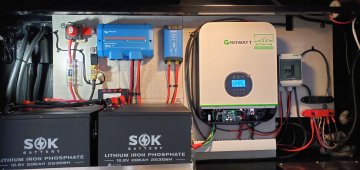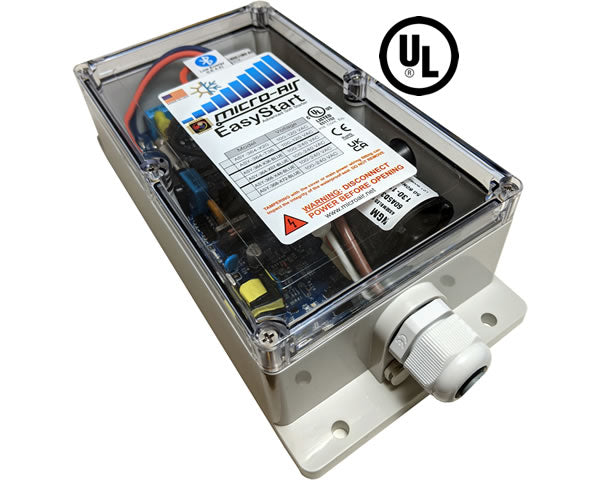Hello all,
I have a GROWATT 24v 3000 all in one and 2 SoK 206ah lithium batteries. I installed this system back in October and everything has been working great, except for the A/C.
My test run failed after a few minutes as I tripped the BMS in one of the SoK's. I realized I had the settings in the GROWATT wrong. I changed them and the A/C then worked from the generator. I only needed it once over the winter in Arizona but now went to use it again (98 degrees in Utah at 4,500') and it keeps tripping the BMS.
I have a champion 2500 watt inverter generator which puts out 1850 watts continuos. The A/C is a 13.5k and runs at 1650 watts. My thoughts are the high temperatures and altitude combined are dropping the output of the generator below the 1650 needed to run the A/C. I've read its a 3% per 1,000' elevation. This would put the power drop around 13.5%. This puts the output at 1600watts which is almost what the A/C needs to run. I've read temperatures need to be over 104 F to start causing a power drop on the generator.
I would think this would only require a little power from the batteries and not trip the BMS but I'm not an expert in how the loads transfer in such situations.
Any input on what I can test or do to fix the problem would be great. My wife is currently NOT very happy.
I have a GROWATT 24v 3000 all in one and 2 SoK 206ah lithium batteries. I installed this system back in October and everything has been working great, except for the A/C.
My test run failed after a few minutes as I tripped the BMS in one of the SoK's. I realized I had the settings in the GROWATT wrong. I changed them and the A/C then worked from the generator. I only needed it once over the winter in Arizona but now went to use it again (98 degrees in Utah at 4,500') and it keeps tripping the BMS.
I have a champion 2500 watt inverter generator which puts out 1850 watts continuos. The A/C is a 13.5k and runs at 1650 watts. My thoughts are the high temperatures and altitude combined are dropping the output of the generator below the 1650 needed to run the A/C. I've read its a 3% per 1,000' elevation. This would put the power drop around 13.5%. This puts the output at 1600watts which is almost what the A/C needs to run. I've read temperatures need to be over 104 F to start causing a power drop on the generator.
I would think this would only require a little power from the batteries and not trip the BMS but I'm not an expert in how the loads transfer in such situations.
Any input on what I can test or do to fix the problem would be great. My wife is currently NOT very happy.







